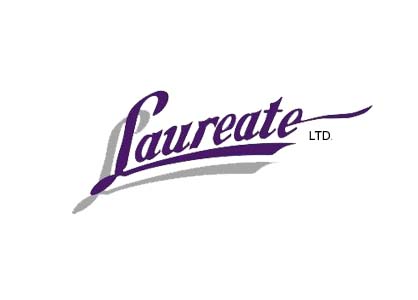In the great game of property management, the rules are always changing. Just when you think you have mastered the board, a new card is drawn, and for Colorado landlords, that card is House Bill 25-1249.
This isn't just a minor rule tweak; it's a significant shift in how security deposits are handled.
Think of it less like a friendly game of Monopoly and more like a high-stakes tournament where understanding the new regulations is your key to winning.
This blog will serve as your playbook, ensuring you navigate these changes without mistakes and oozing confidence while securing your investments.
Key Takeaways
Act Faster: You now have a maximum of 30 days to return a security deposit or provide an itemized list of deductions after a tenant moves out.
Document Everything: The law places the burden of proof on you. Meticulous move-in and move-out inspections, complete with photos and signed checklists, are no longer optional, they are essential for justifying any deductions.
Know the Difference: You can only deduct for actual damages beyond normal wear and tear. Costs for routine maintenance or standard turnover preparations cannot be taken from the security deposit.
The New Clock: Understanding the 30-Day Return Window
Perhaps the most impactful change from HB 25-1249 is the accelerated timeline for returning a tenant's security deposit. The old 60-day window, if stipulated in the lease, is a thing of the past. You are now on a much tighter schedule.
The law is clear: you have a maximum of 30 days from the date the lease terminates and the tenant vacates the property to either return the full deposit or send a detailed statement of deductions. This deadline is non-negotiable.
Missing it can expose you to significant legal risk, including being liable for up to three times the amount of the deposit, plus the tenant's court costs and attorney fees. This change requires you to streamline your turnover process.
You must be efficient in conducting inspections, getting repair estimates, and processing the final accounting.
The Fine Print: What You Can (and Cannot) Deduct
HB 25-1249 brings greater clarity to what constitutes a valid deduction from a security deposit. The law reinforces a critical distinction: you can only charge for damages that go beyond normal wear and tear.
Normal Wear and Tear vs. Actual Damage
Understanding this difference is crucial for compliance. Think of "normal wear and tear" as the gentle aging of a property. It’s the expected depreciation from a tenant simply living in the space.
Examples of Normal Wear and Tear:
Minor scuffs on walls or faded paint
Gently worn carpets from regular foot traffic
Loose fixtures or aging grout in a bathroom
Fading on hardwood floors due to sunlight
"Damage," on the other hand, results from negligence, accidents, or intentional harm. It's the kind of thing that requires repair, not just routine upkeep.
Examples of Deductible Damage:
Large holes punched in walls
Deep scratches or burns on countertops
Significant pet stains on the carpet that require special treatment or replacement
Broken windows or unauthorized alterations, like painting a room without approval
You cannot use the security deposit to pay for the cost of preparing a unit for the next tenant. This includes standard cleaning, repainting between tenants (unless covering up damage), or replacing a carpet simply because it's old.
Those are considered costs of doing business.
Your Action Plan for Flawless Compliance
Adapting to these updates is about more than just reading the law; it’s about putting new processes into practice. Taking these steps will not only ensure you are compliant but also protect you from potential disputes.
1. Modernize Your Lease Agreement
Your lease is your foundational document. Start by reviewing and updating it immediately. Any mention of a 60-day deposit return period must be removed and replaced with the new 30-day timeline.
Use this opportunity to also clarify your policies on damages, defining what constitutes normal wear and tear versus what could result in a deduction. Setting clear expectations from day one is your best first line of defense.
2. Master the Art of the Inspection
Your inspection process is the most powerful tool you have. A detailed and well-documented inspection provides the evidence you need to justify any claims against a deposit.
At Move-In:
Be Thorough: Use a comprehensive checklist to go through the property with your new tenant. Don't rush this process.
Become a Photographer: Take extensive, date-stamped photos and videos of every room, appliance, and surface.
Get a Signature: Have your tenant sign the completed inspection form, acknowledging the property's condition at the start of their lease. This creates a shared understanding and a baseline for the final walkthrough.
At Move-Out:
Act Quickly: Schedule the final inspection as soon as the tenant has removed all their belongings.
Compare and Contrast: Use the signed move-in checklist as your guide. Note every discrepancy between the property's initial and final condition.
Document Again: Take new photos and videos of any damages you identify. This visual evidence is invaluable if a dispute arises.
3. Keep Impeccable Records
If you must make deductions, HB 25-1249 requires you to provide the tenant with a written, itemized statement explaining each charge. To back this up, you need a solid paper trail.
Gather Quotes: Get written estimates or invoices from licensed contractors for all repair work.
Save Receipts: Keep every receipt for materials and labor.
Be Specific: Your itemized list should be crystal clear. Instead of a vague entry like "Painting - $300," specify, "Patching and repainting two large holes in the master bedroom wall - $300."
This detailed statement and any remaining deposit must be sent to the tenant's last known address within the 30-day timeframe.
Beyond Compliance: Elevate Your Property Management
For expert support with Colorado’s landlord-tenant laws, trust our team at Laureate LTD. Our team of professionals handle compliance and property management, while you focus on growing your investments.
Explore our tenant screening, rent collection, and other services to protect and maximize your rental business.
Frequently Asked Questions (FAQ)
1. Can I charge tenants for professional carpet cleaning from the deposit?
Not for routine cleaning—only for damage or excessive stains beyond normal use.
2. Does the 30-day rule apply if a tenant abandons the property?
Yes, you must return the deposit or send the itemized statement within 30 days after regaining possession.
3. What if repairs aren’t finished within 30 days?
You can send a professional estimate with your deduction statement, then follow up with final costs if needed.
Other Resources:
Property Renovation Tips for Landlords: When and Where to Invest
The Perfect Price: How to Attract Quality Tenants to Your Rental Property



